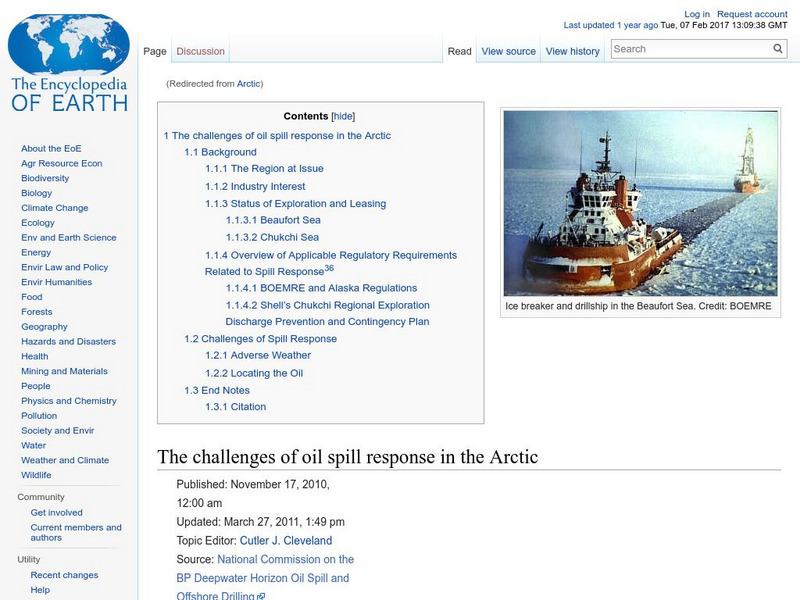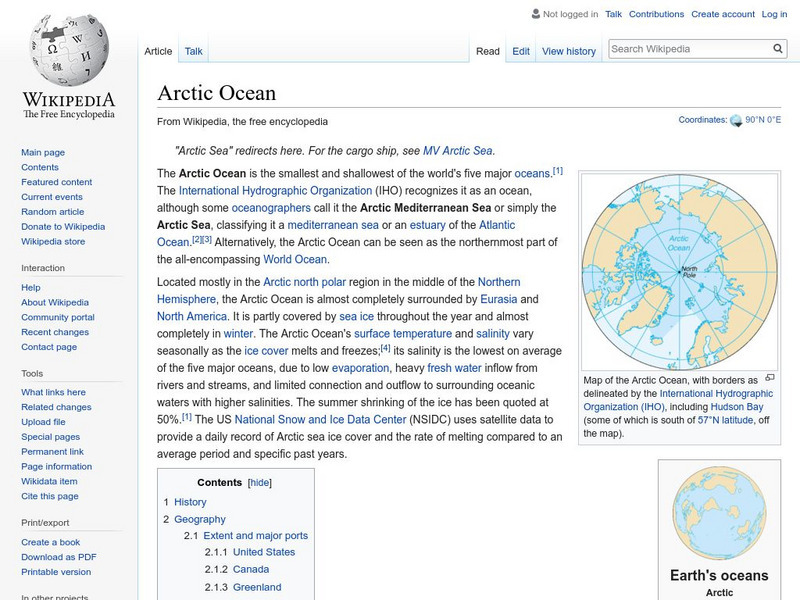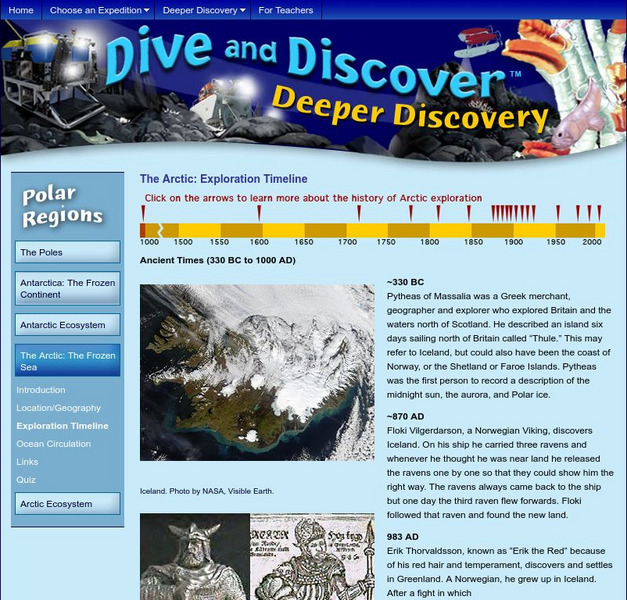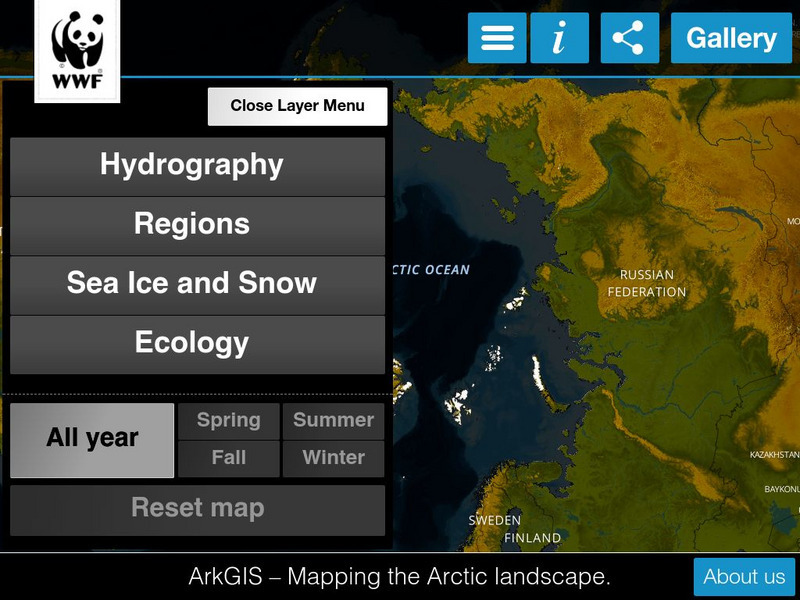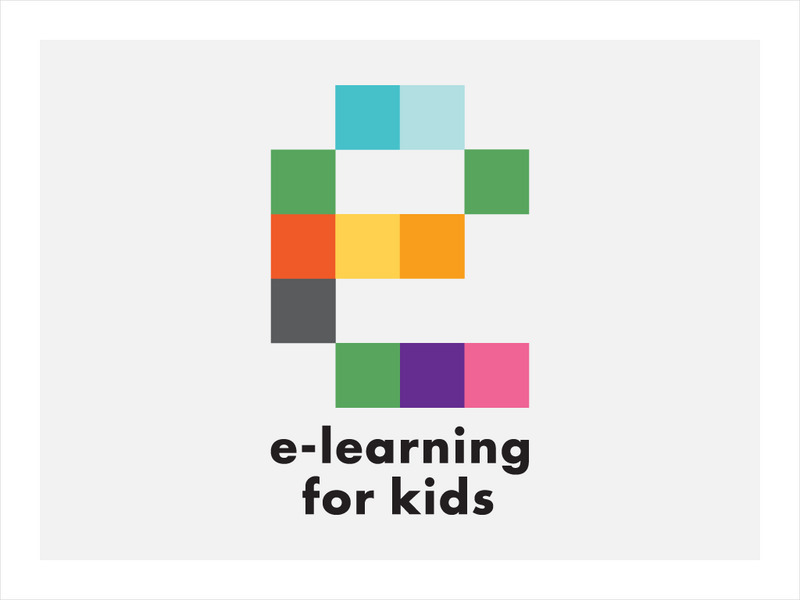Hi, what do you want to do?
Curated OER
CGC1P -- Unit 1 Lesson 2 Video Introduction
In this listening worksheet, 5th graders fill-in the blanks and respond to questions. Students watch a video and fill-in the blanks and answer questions with information that they hear during the video.
Curated OER
Habitats and All That
First graders read books, complete online explorations and discuss the ways in which animals adapt to their habitats in order to survive. They create accordion books, play matching games and dramatize animal adaptations.
Curated OER
Looking for a Walrus
Students sing and role-play the song "Looking for a Walrus" to explore walrus adaptations.
Curated OER
Energy Flow in Ecosystems
Students, in groups, create a slide show about the ecosystem and answer critical thinking questions based on their research.
Curated OER
Birds
Students list marine birds in their area and report on the threats made to these species. In this marine life instructional activity students compare bird count data and argue either for or against its accuracy.
Curated OER
It's not just pretty - it's a survival method!
First graders write explanations for why certain animals can only live in certain environments. In this animal survival lesson plan, 1st graders take pictures of animals and place them into the right environment after a lesson on the...
Curated OER
Extreme Environments
Students examine extreme environments and the characteristics that make them. In this adaptation lesson students see how animals have adapted to these environments.
Curated OER
Antarctica Food Chain
Students visit an interactive web page. In this food chain lesson, students visit an interactive web page displaying an example of the food chain in Antarctica. As students move their mouse over the images, captions appear describing the...
Curated OER
Ocean Animals vs. Humans
Students use critical thinking skills to solve word problems using ratios that allow them to compare humans to ocean animals.
Curated OER
Where Do All the Animals Live?
Students study animal habitats and make a poster showing two animals, two birds, and two reptiles in their habitats.
Curated OER
Looking for a Walrus
Students perform the "Looking for a Walrus" song while role-playing to show their awareness of walrus adaptations. They study the words and add motions to the song.
Curated OER
Learning About Mammals
Students study the mammal classification and forms of them living in the United States. In this mammal study lesson plan, students read through orders of mammals that exist in the United States. Students also study the taxonomy of an...
Encyclopedia of Earth
Encyclopedia of Earth: Arctic Ocean
Lengthy illustrated article about the Arctic Ocean discusses all the many features and characteristics of this vast northern ocean--sea ice, icebergs, ice shelves, ice islands, the Arctic Ocean floor, continental shelf--as well as the...
Wikimedia
Wikipedia: Arctic Ocean
A wealth of facts is presented in this article on the Arctic Ocean. Content covered includes the area, natural resources, climate, terrain and much more.
Other
New Bedford Whaling Museum: William Bradford: Sailing Ships and Arctic Seas
Online exhibit of the life and work of nineteenth-century American marine artist William Bradford, whose lifelong interest in the sea led him north from New Bedford to Labrador and to the Arctic Ocean. See examples of Bradford's...
PBS
Pbs Learning Media: Link Between Arctic Sea Ice and Solar Radiation Absorbed
The Arctic plays an important role in regulating Earth's climate. The region reflects much of the Sun's energy and helps keep the planet cool. Data collected by NASA have revealed that sea ice in the Arctic has steadily declined over the...
Woods Hole Oceanographic Institution
Woods Hole Oceanography Institute: The Arctic: Exploration Timeline
This interactive timeline traces the history of Arctic exploration from 330BC to 2000AD.
Other
Ark Gis: Exploring the Arctic
Interactive mapping platform that combines and integrates existing data about the environment and human activity in the Arctic.
PBS
Pbs Learning Media: Albedo Decrease Linked to Vanishing Arctic Sea Ice
Examine this visualization by NASA to understand how the warming of the Arctic region has caused the sea ice extent to decline by 40%, thereby throwing our earth's energy budget off balance. Extensive resources included are teaching...
E-learning for Kids
E Learning for Kids: Science: Arctic Ocean: Finland: What Is Matter?
A module to learn about matter including the exploration of mass and volume.
E-learning for Kids
E Learning for Kids: Science: Arctic Ocean: What Are Conductors and Insulators?
Visit Vlad and learn about the properties of conductors and insulators, and what materials are used for them.
E-learning for Kids
E Learning for Kids: Science: Arctic Ocean: How Can We Change Materials?
Join Jacob on the Nova Zembla Expedition, and help him use suitable materials for building his house.
Encyclopedia of Earth
Encyclopedia of Earth: Arctic
Information on the climate, permafrost, vegetation, wildlife, environmental concerns, and ocean in the Arctic Region of the world.
NOAA
Noaa: Ocean and Coasts
This website highlights the oceans of the world. Even though June is World Ocean Month, learning about oceans never ends! There are links here to many resources and lesson plans regarding the Arctic, Atlantic, Indian, Pacific, and...
Other popular searches
- Arctic Ocean Diorama
- Arctic Ocean Minerals
- Arctic Ocean Ecosystems
- Arctic Ocean Plan
- Arctic Ocean Biome Diorama
- Arctic Ocean Language Arts
- Arctic Ocean Niome Diorama
- Arctic Ocean Nome Diorama
- Greenland /Arctic Ocean
- The Arctic Ocean Landform
- Arctic Ocean Land Form
- Arctic Ocean Bio Me Diorama

















